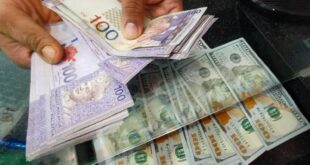JAKARTA: Indonesia has begun work on a roadmap to develop the silica industry as a starting point for building a microchip industry in the country, but some Asean peers are much farther ahead in the race for semiconductor investment.
Led by the Industry Ministry, the roadmap is scheduled to be ready by the end of next year and serve as a reference for industrial development from 2025 to 2035, with the aim of building the capability to produce silicon wafers onshore within that time frame.
“Silica (industry development) as a national programme will only receive its budget allocation in 2024,” Wiwik Pudjiastuti, a director in the Industry Ministry, told The Jakarta Post.
The roadmap will cover six strategic aspects, namely a review of Indonesia’s resources, the actors involved, existing and necessary manufacturing technology, policies, human capital and the market potential, both domestic and foreign.
Silica is the raw material for silicon wafers, and the latter are the building blocks of semiconductor chips as well as photovoltaic modules, commonly known as solar panels, meaning its processing could serve two different manufacturing industries.
According to 2021 Energy and Mineral Resources Ministry data, Indonesia has some 330 million tonnes of silica sand reserves, with a far bigger resource potential of 2.1 billion tonnes.
Wiwik explained that this number was subject to change through future surveying.
However, the resource alone does not translate into a strong competitive advantage, given that silica can be found in virtually any country.
Hence, the government cannot bank on that to attract investment. Institute for Development of Economics and Finance executive director Tauhid Ahmad said that left Indonesia with just one more proposition, namely the strength of its domestic market, supposing it has demand for silicon wafers.
“If it’s solely for export, I think it will be difficult,” Tauhid told the Post on Monday. Creating a market for silicon wafers will be part of the government’s road map, according to Wiwik.
Obvious offtakers for solar panels are state-owned utility firm PLN and private companies betting on Indonesia’s energy transition, while semiconductors could be sold to manufacturers like automakers, which struggled to secure the critical components amid a global chip shortage last year.
Attracting semiconductor investment was “quite possible” for Indonesia, Tauhid said, especially if the country could offer “very cheap prices”.
Concurring, Economist Intelligence Unit analyst Laveena Iyer told the Post on Tuesday that there was no doubt about “foreign investor interest in Indonesia’s budding chip industry”, pointing to the Indonesian operations of Germany’s Infineon as a case in point.
Semiconductors differ widely in complexity, ranging from simple ones used in household appliances to sophisticated ones for supercomputers or high-end military equipment. — The Jakarta Post/ANN
 BeritaKini.biz Berita Viral Terkini di Malaysia
BeritaKini.biz Berita Viral Terkini di Malaysia





